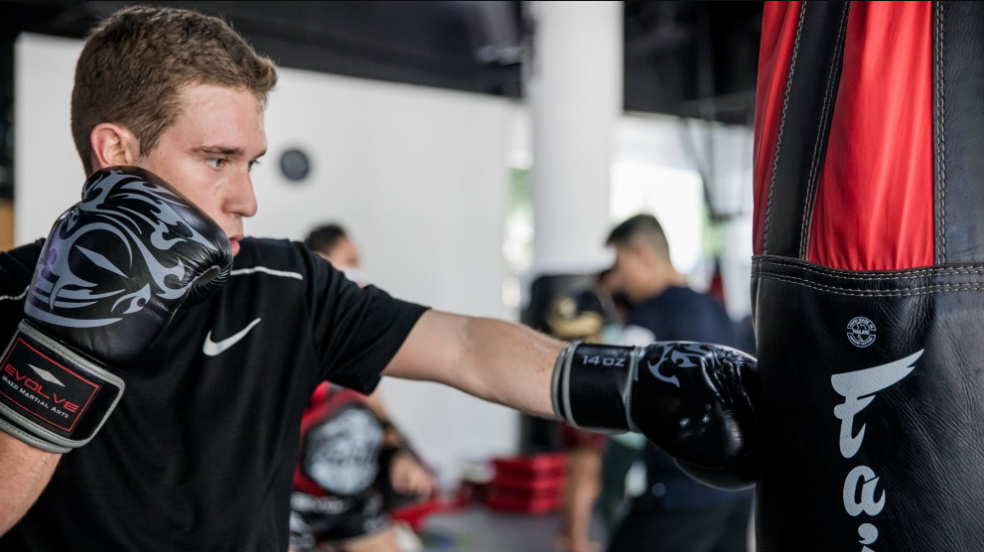Common Mistakes in Boxing (and How to Avoid Them!)

Boxing might seem simple—throw punches, dodge hits, repeat. But once you step into the ring, you’ll realize there’s a lot more technique involved. Many beginners and even experienced fighters make mistakes that hurt performance or cause injuries. The good news? Most are fixable. Here are six common boxing mistakes and how to avoid them.
Mistake 1: Improper Stance
Your stance forms the foundation of everything you do in boxing. Get it wrong, and every punch, defensive move, and footwork pattern becomes compromised.
The most common stance errors include standing too narrow (making yourself unstable), placing feet too far apart (limiting mobility), and distributing weight incorrectly between your front and back foot.
The Correct Orthodox Stance:
- Position your left foot forward, right foot back
- Keep feet shoulder-width apart
- Point your front foot toward your target
- Angle your back foot at roughly 45 degrees
- Distribute 60% of your weight on your back foot, 40% on your front foot
- Keep knees slightly bent for mobility and power generation
Common Errors to Watch For:
- Standing square to your opponent (exposing your entire body)
- Keeping legs too straight (reducing power and mobility)
- Crossing your feet when moving
- Standing on your toes constantly (causing fatigue and instability)
Practice your stance in front of a mirror daily. Start slow, focusing on proper positioning before adding movement or punches.
Mistake 2: Dropping Your Hands
Perhaps no mistake leaves fighters more vulnerable than dropping their hands. When your guard comes down, you’re essentially inviting your opponent to land clean shots to your head.
This mistake often happens when fighters get tired, overconfident, or overly focused on offense. Some beginners also drop their hands when throwing body shots, leaving their chins completely exposed.
Proper Hand Position:
- Keep both hands up near your temples
- Maintain loose fists when not punching
- Keep your elbows close to your body
- Return hands to guard position immediately after throwing punches
Training Solutions:
- Practice combination punching with emphasis on returning to guard
- Do conditioning exercises while maintaining proper guard position
- Have a training partner call out “hands up” randomly during practice
- Use mirror work to develop muscle memory for the proper guard position
Remember: your hands protect your most vulnerable target. Make keeping them up a non-negotiable habit.
Mistake 3: Telegraphing Punches
Telegraphing means giving away your intentions before throwing a punch. This might involve winding up your arm, shifting your weight, obviously, or making facial expressions that signal what’s coming.
Experienced opponents can read these tells and counter effectively, turning your offensive moments into defensive nightmares.
Common Telegraph Signals:
- Drawing your hand back before punching
- Changing facial expression before attacking
- Obvious weight shifts
- Looking directly at your target
- Tensing up before throwing
How to Throw Deceptive Punches:
- Start punches from your guard position
- Keep the same facial expression throughout combinations
- Use subtle feints to mask real attacks
- Practice throwing punches while looking elsewhere
- Work on smooth weight transfers
Effective Training Drills:
- Shadow boxing while focusing on minimizing telegraphs
- Partner drills where one person tries to predict incoming punches
- Mirror work to observe your own tells
- Combination training with emphasis on seamless transitions
See also: Hottu Earbuds Battery Life Review – Real Usage
Mistake 4: Over-Rotating on Punches
Power in boxing comes from proper technique, not excessive rotation. Many fighters think turning their entire body into every punch will generate maximum force, but over-rotation actually reduces power while compromising balance and recovery.
When you over-rotate, you often end up off-balance, unable to follow up effectively, and vulnerable to counters.
Signs of Over-Rotation:
- Spinning past your target after punching
- Losing sight of your opponent mid-combination
- Stumbling or needing extra time to reset your stance
- Throwing wild, looping punches instead of straight shots
Proper Rotation Technique:
- Rotate your hips and shoulders together, not separately
- Stop your rotation when your punch lands
- Keep your non-punching hand in guard position
- Maintain visual contact with your target throughout
- Focus on snapping punches rather than pushing through targets
Balance and Technique Drills:
- Practice punching while standing on one foot to improve balance awareness
- Use a double-end bag to work on accurate, controlled punching
- Shadow box with emphasis on stopping cleanly after each punch
- Work combinations that require quick recovery between punches
Mistake 5: Not Using Footwork
Some fighters become so focused on their hands that they forget about their feet. But in boxing, footwork isn’t optional—it’s essential for both offense and defense.
Poor footwork limits your ability to create angles, escape danger, maintain proper distance, and generate power from the ground up.
Why Footwork Matters:
- Creates angles for attack and defense
- Helps maintain optimal punching range
- Generates power from the ground through your entire body
- Allows quick escapes from dangerous situations
- Sets up combinations by positioning you advantageously
Fundamental Footwork Patterns:
- Step-drag: Move your lead foot first, then drag your back foot
- Pivot: Rotate on your front foot to change angles
- Side-step: Move laterally to avoid attacks or create openings
- Circle: Move around your opponent to avoid their power side
Footwork Training Exercises:
- Ladder drills for speed and coordination
- Shadow boxing with emphasis on movement
- Partner drills focusing on distance management
- Cone drills to practice specific movement patterns
- Jump rope for timing and foot coordination
Practice footwork separately before combining it with punching. Master the movements slowly, then gradually increase speed while maintaining proper form.
Mistake 6: Improper Equipment
Using wrong or poorly maintained equipment can hinder your progress and increase injury risk. This mistake often stems from not understanding what gear you need or trying to save money in the wrong places.
Essential Equipment Considerations:
Hand Wraps and Gloves:
- Always wrap your hands properly before training
- Choose an appropriate glove weight for your training type
- Replace worn-out gloves that no longer provide adequate protection
- Ensure proper fit—gloves shouldn’t be too tight or too loose
Protective Gear:
- Use a properly fitted custom dental guard during sparring
- Invest in quality headgear if you plan to spar regularly
- Consider groin protection for male fighters
- Don’t skip protective equipment to appear tougher
Training Equipment:
- Choose shoes with proper ankle support and grip
- Use appropriate clothing that allows free movement
- Maintain equipment regularly—check for wear and damage
- Replace equipment before it becomes unsafe
Equipment Investment Tips:
- Buy quality items for gear you’ll use most frequently
- Don’t compromise on safety equipment
- Ask experienced fighters or trainers for equipment recommendations
- Start with the basics and add specialized gear as your skills develop
Conclusion
Boxing skills take time—months and years, not days. Focus on proper form over power and trust the process. Work on one mistake at a time, building strong fundamentals before moving on. Even pros continually refine the basics. Find a qualified trainer for feedback to prevent bad habits. Stay consistent and patient; with mindful practice, correct technique will become second nature.






